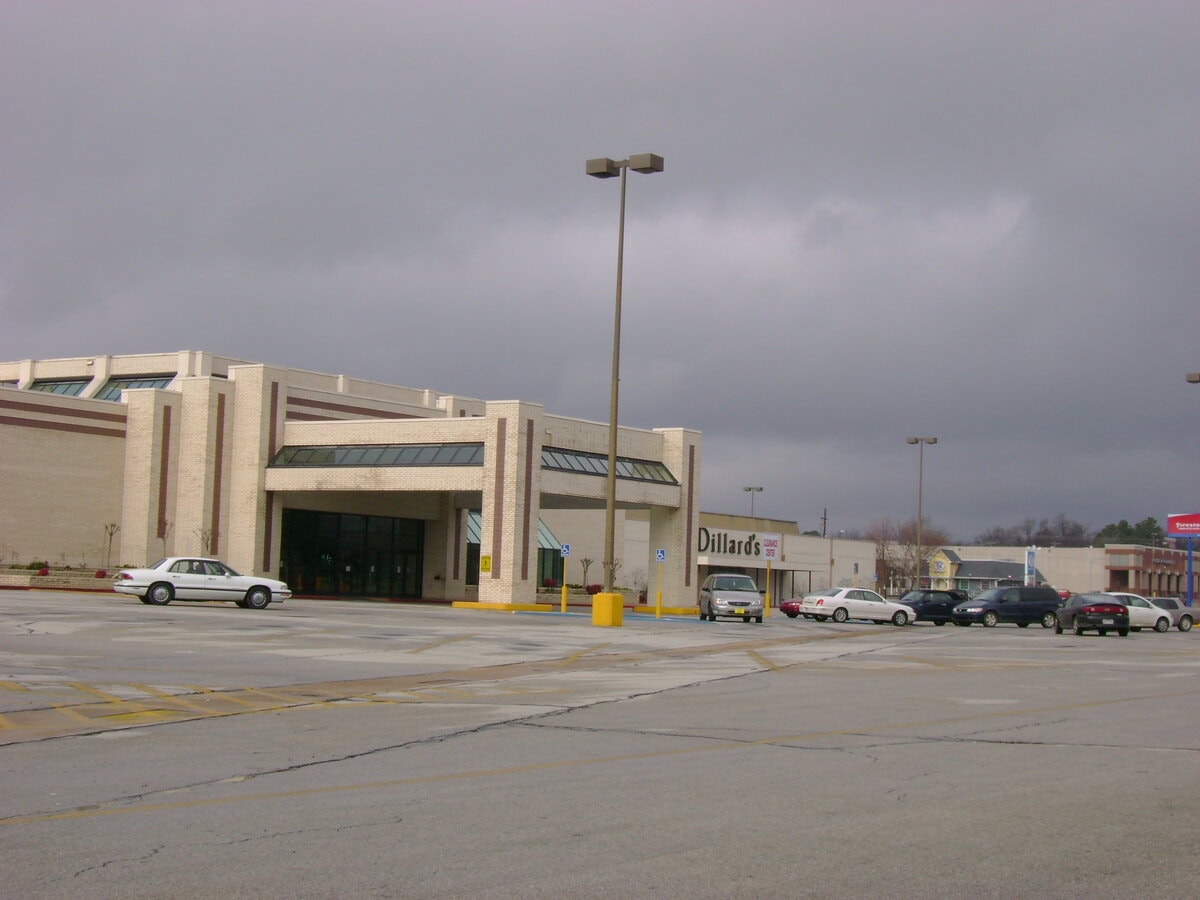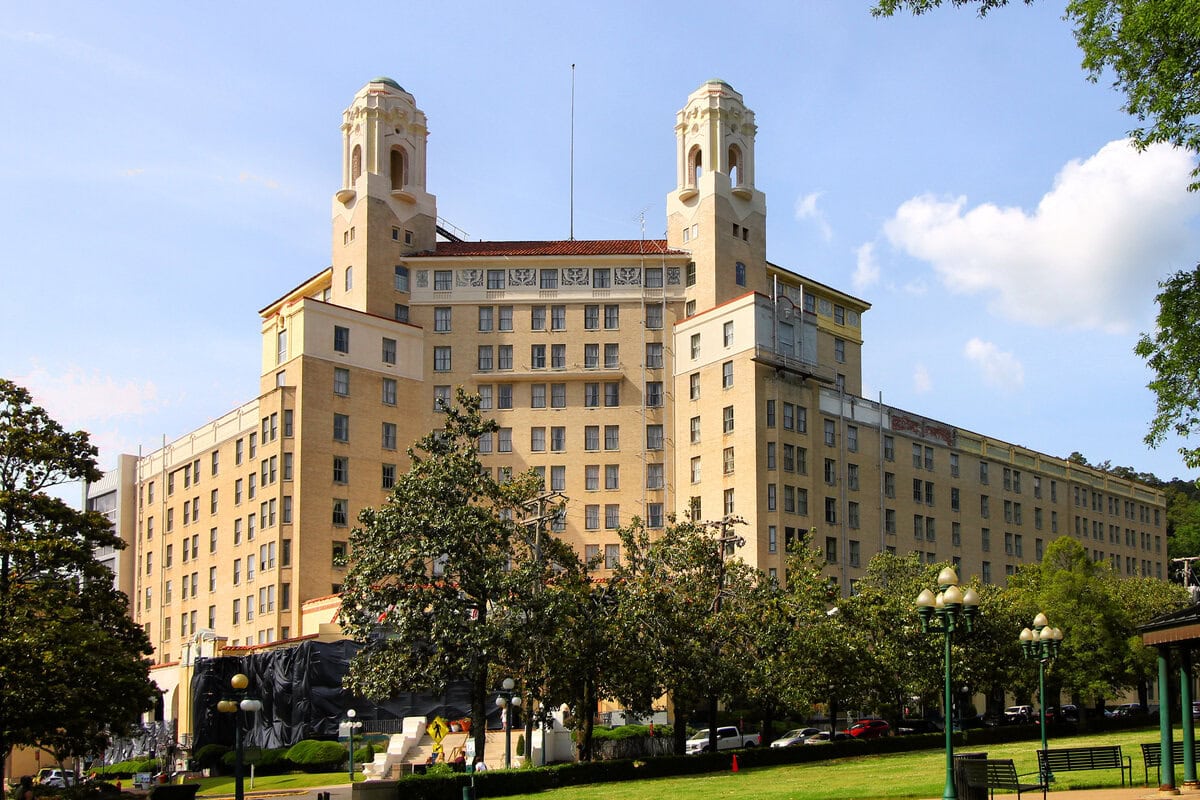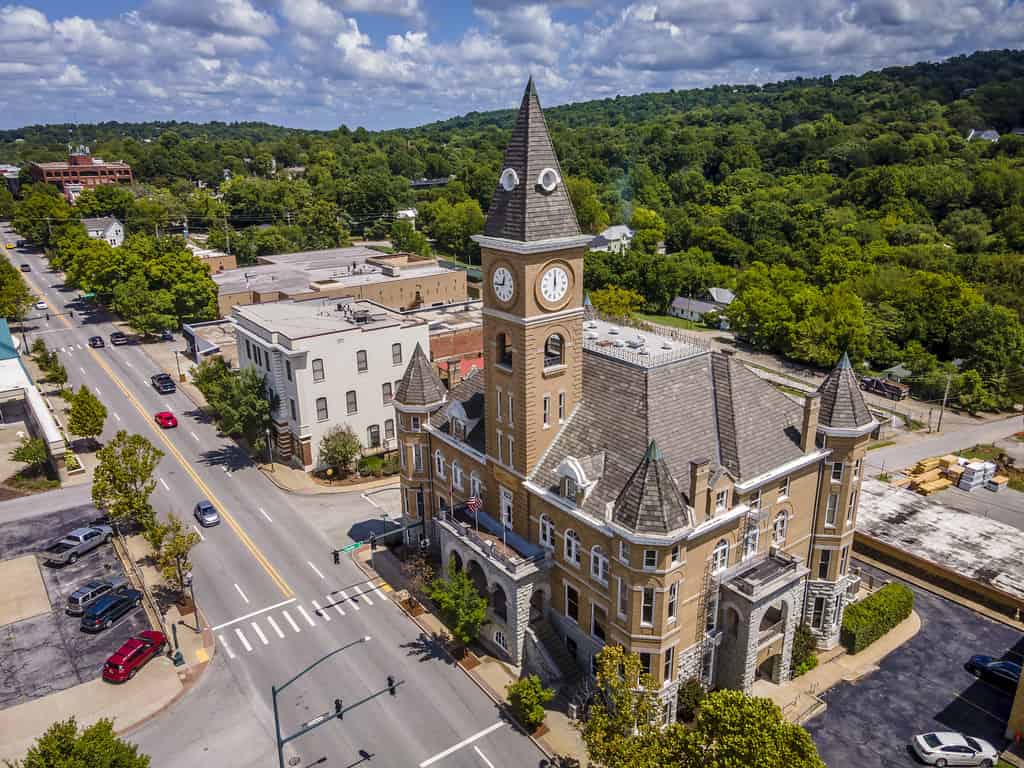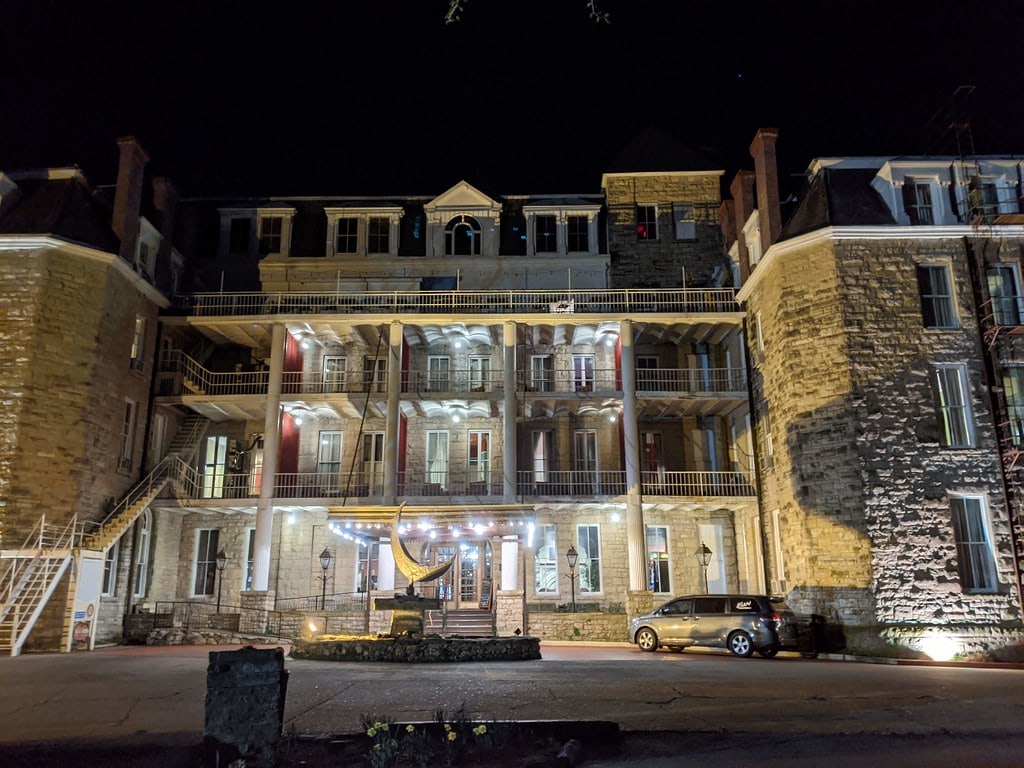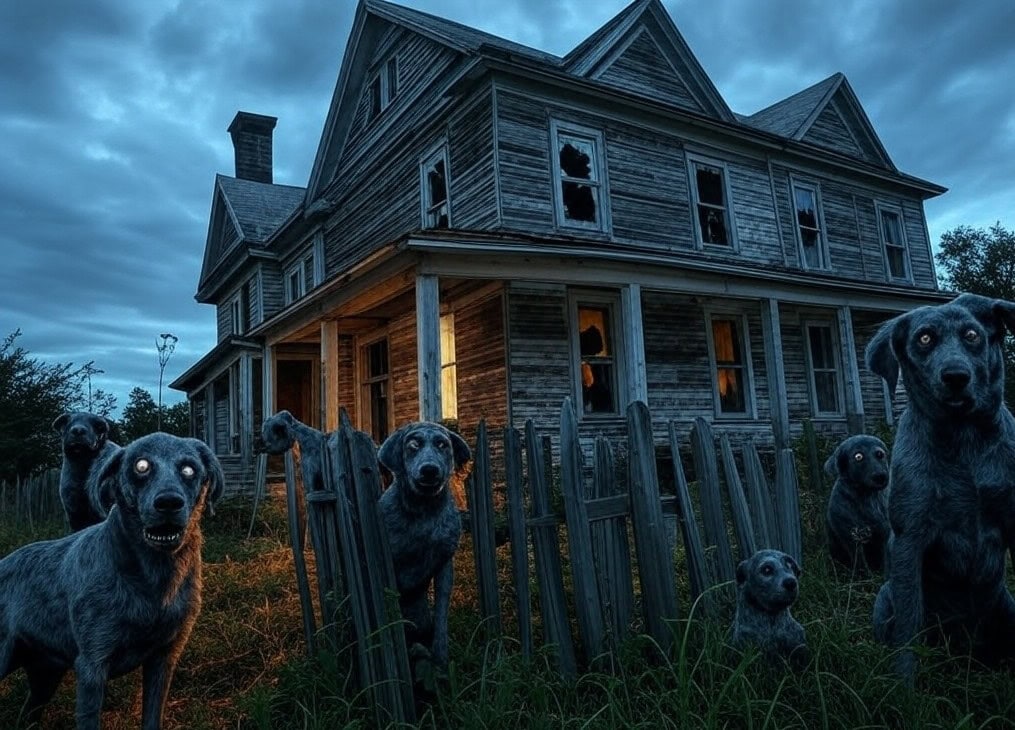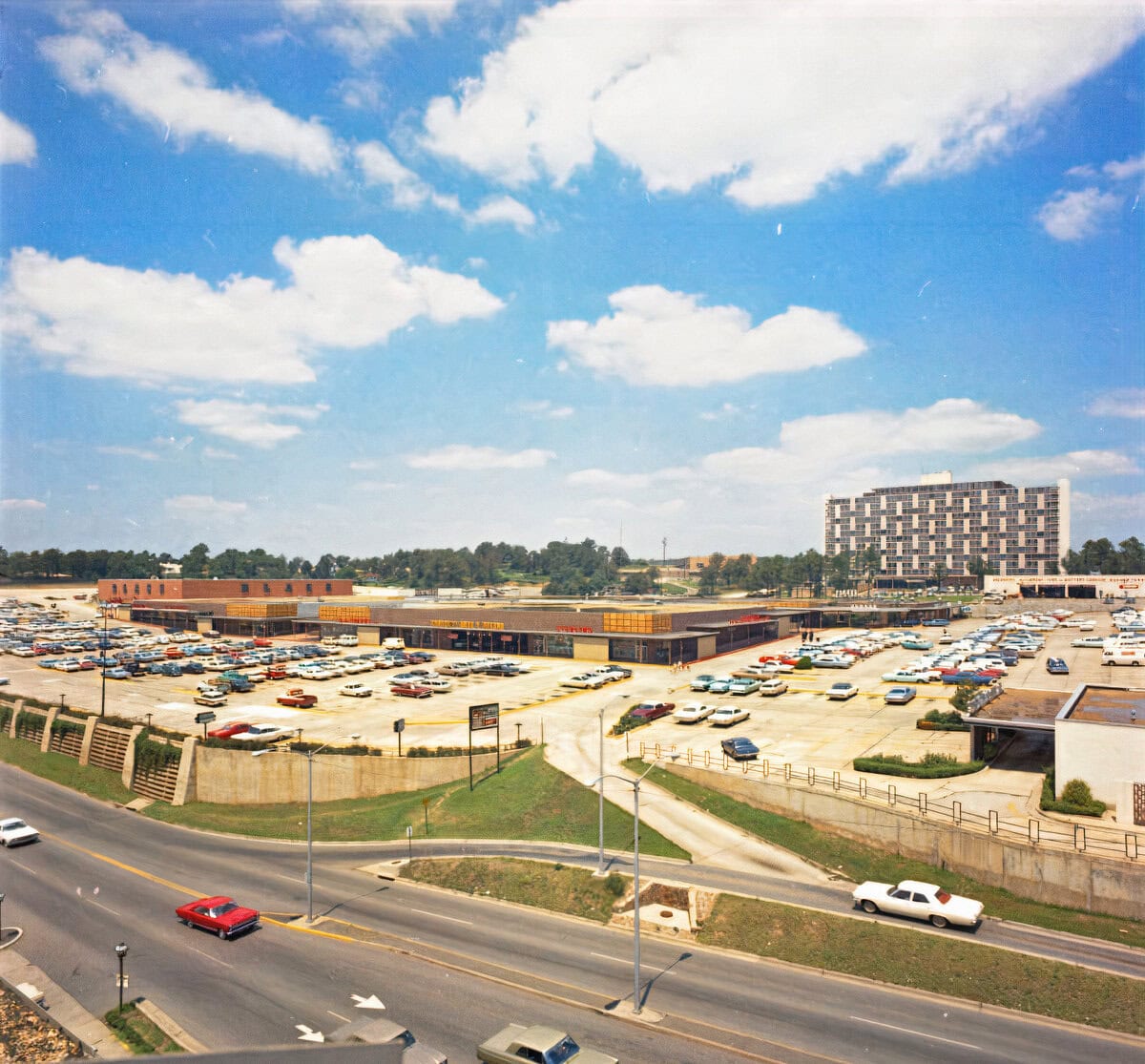Ghosts in the Marble
Ask someone about Hot Springs, Arkansas, and the name Arlington Hotel slips into the conversation as if it's always belonged there.
Its lobby hums with old stories, and the marble underfoot has seen everything from velvet dresses to suitcases with racing stubs tucked inside.
People say the air feels thick with the memories of jazz bands, traveling dignitaries, and whispered deals that shaped this corner of the Ouachita Mountains.
Even today, restoration crews work around stained glass and plaster, pausing now and then as sunlight filters through the old windows.
On any list of things to do in Hot Springs, Arkansas, Arlington Hotel waits near the top - and not just for the beds or the mineral baths, but for the sense that you've stepped into the kind of place where the past isn't finished yet.
First Foundations - The Hotel's Grand Entrance into Hot Springs
The original Arlington Hotel didn't arrive quietly.
Opening its doors in 1875, it became the first luxury hotel in Hot Springs, built with the backing of Samuel W. Fordyce and two business partners.
The idea was to attract visitors looking for comfort while taking in the city's thermal springs.
For nearly two decades, Arlington Hotel set a new bar for what guests could expect from a resort in the region.
The original building became a magnet for travelers who wanted something more than basic shelter.
Business deals, social gatherings, and the steady rhythm of new arrivals gave Arlington Hotel its early energy.
At the north end of what would become Bathhouse Row, this first structure didn't simply offer rooms - it offered a sense of occasion every time someone stepped off the train and into the lobby.
By the time a new generation came along with plans for expansion, the Arlington Hotel had already changed what hospitality meant in Hot Springs.
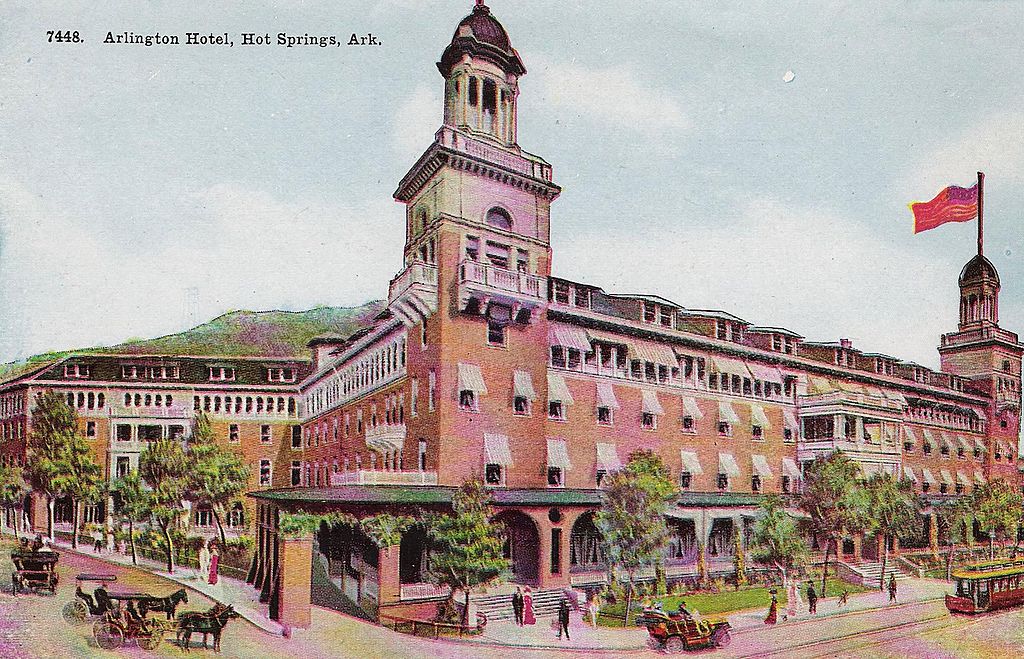
Fire, Rebuild, and the Realities of Hotel Risk
The story of the Arlington Hotel's second chapter began with high ambition in 1893.
The old wood-frame building came down, and in its place rose a four-story brick hotel with Spanish Renaissance styling.
With 300 rooms, broad corner towers, and electric lighting throughout the dining room, the Arlington Hotel quickly became a status symbol for both visitors and the city itself.
As each season passed, more people arrived by train, looking for comfort with a bit of drama.
For nearly thirty years, the Arlington Hotel's red brick façade greeted travelers and offered a stage for local commerce, tourism, and social events.
Disaster struck on April 5, 1923. A fire moved fast through the building, consuming the structure and bringing business to a standstill.
The blaze claimed the hotel entirely and left one fireman dead.
The fire caused $1.6 million in damage, an enormous loss in 1923 and a sharp hit to Hot Springs' standing as a resort town.
Insurance paperwork moved fast, salvage crews cleared the wreckage, and the board began charting a replacement before the ashes cooled.
The site didn't sit empty long.
Plans for a new Arlington Hotel moved ahead almost immediately, driven less by sentiment than by a clear refusal to let the city's anchor property go quiet.
Rebirth at the Crossroads - Construction and Landmark Ambition
Construction on a brand-new Arlington Hotel kicked off soon after, and by December 31, 1924, a new building stood ready at the intersection of Central Avenue and Fountain Street.
The architects Mann and Stern led the project, delivering a Spanish-Colonial Revival design with twin towers, ornate arches, and a grand entrance.
The new Arlington Hotel stretched across a spacious footprint, housing nearly 500 rooms, a Crystal Ballroom, the Venetian Room, a Music Room, and an in-house bath house that piped thermal spring water into guest baths.
Developers, business leaders, and city officials looked to the Arlington Hotel as more than just a place to sleep.
It was meant to be an anchor for commerce and a beacon for travelers chasing the region's mineral waters and nightlife.
Grand openings and formal dinners followed. Banquet halls filled with laughter and the sounds of orchestras.
The site of the older hotels became a park, and the new Arlington Hotel's location cemented it as an unmistakable presence at one of the city's most prominent intersections.
The new design and prime address quickly made it a fixture of business, social, and tourism activity in Hot Springs.

High Rollers and Headliners - The Arlington Hotel's Guest List and Social Pull
For decades, the Arlington Hotel didn't just attract guests.
It drew headlines. In the 1930s, Al Capone took over room 443 and rented out the entire floor around it.
Locals knew the pattern: heavy-footed bodyguards, closed doors, curtains drawn tight even in daylight.
The hotel never advertised it, but word got around.
That same register welcomed a rotation of presidents over the years, Franklin Roosevelt, Harry Truman, George H.W. Bush, Bill Clinton, each visiting during different chapters of American life.
Some came for political meetings, others for the baths.
There's no single genre for the Arlington Hotel's guest list.
Babe Ruth showed up with bats and stories. Tony Bennett and Barbra Streisand were seen around the dining rooms.
Yoko Ono made her mark on the guest log.
The Crystal Ballroom held up under black ties and dance shoes while reporters took notes in the lobby, waiting for someone interesting to walk past.
Travel guides and local newspapers covered the events, sometimes on full pages.
Charles Cutter's 1892 line, calling it "the most elegant and complete hotel in America," was printed long before many of these names arrived.
Still, that description kept echoing, decade after decade.
Upgrades and Innovation - New Conveniences in an Old Landmark
Before 1955, there was no central air at the Arlington Hotel.
Rooms depended on window ventilation, ceiling fans, and whatever breeze moved through open corridors.
It worked, but just barely. The system finally changed in 1955 when the hotel installed central heating and air conditioning.
Comfort caught up with the calendar.
A few years later, in 1969, the original elevators were replaced with newer systems capable of handling both the guest volume and updated fire codes.
The changes weren't flashy, but they kept the Arlington Hotel running smoothly while competitors stumbled or closed.
One original piece survived: the hand-operated elevator inside the bathhouse section.
Installed in 1924, its beveled glass and brass finishes still shine.
It moves slower than the newer lifts, and it's manually controlled, but it hasn't been retired.
That choice, to leave it in place, was deliberate.
Updates came with limits. Some renovations happened behind closed doors, phased in during off-seasons, filed in city permits and plumbing contracts.
This wasn't about nostalgia. It was about staying relevant without discarding the bones of the place.
Each adjustment kept the hotel rentable, workable, and, most importantly, open.
People wanted charm, yes, but only if the air was cool and the elevators worked.

Preservation Status and Regulatory Pressure - The Arlington Hotel's Place in Policy and Paperwork
By 1985, the Arlington Hotel had crossed a line. It wasn't just old. It was protected.
On June 25 of that year, the building was listed as a contributing property in the Hot Springs Central Avenue Historic District.
That status wasn't symbolic. It came with a set of rules and a bureaucratic trail.
Any changes to the exterior or historically relevant interior features now had to run through approval processes.
Contractors, once used to working with speed and discretion, were suddenly answering to preservation officers, filing reports, and waiting on clearances.
The location added complexity.
The Arlington Hotel sits inside Hot Springs National Park, which brings federal interest into anything that affects the surrounding streetscape or thermal water systems.
Local zoning and building code adjustments had to account for national historic standards.
Real estate investors learned quickly that even repainting a façade might involve federal correspondence.
And yet, those same constraints protected the hotel from the worst instincts of quick-profit redevelopment.

Ownership Change and Capital Rehab - The Business of Restoration, 2023-2025
By 2023, years of deferred maintenance had caught up.
Stucco peeled, window seals failed, and plumbing groaned under decades of patchwork.
Sky Capital Group had acquired the Arlington Hotel back in 2017.
Backed by Arkansas Federal Credit Union, the group launched a full restoration, shifting from spot repairs to a $30 million overhaul.
Crews hit the walls fast.
Scaffold went up around the façade, starting near the corner of Central Avenue and Fountain Street and moving along in phases.
The goal was to return the structure to its 1924 look without losing function to nostalgia.
Almost 1,000 windows were marked for replacement. Masonry was inspected brick by brick.
The Venetian Room ceiling took five months alone, much of it done by hand.
A rooftop chiller and cooling tower, installed back in early 2022, now anchor a new HVAC system.
Contractors moved floor by floor, working in zones to avoid a full shutdown.
The Arlington Hotel stayed open during all of it, juggling bookings while forklifts and painters rotated through the halls.
The work wasn't flashy. It was practical. Strip, patch, match, repeat, until the place could breathe again.
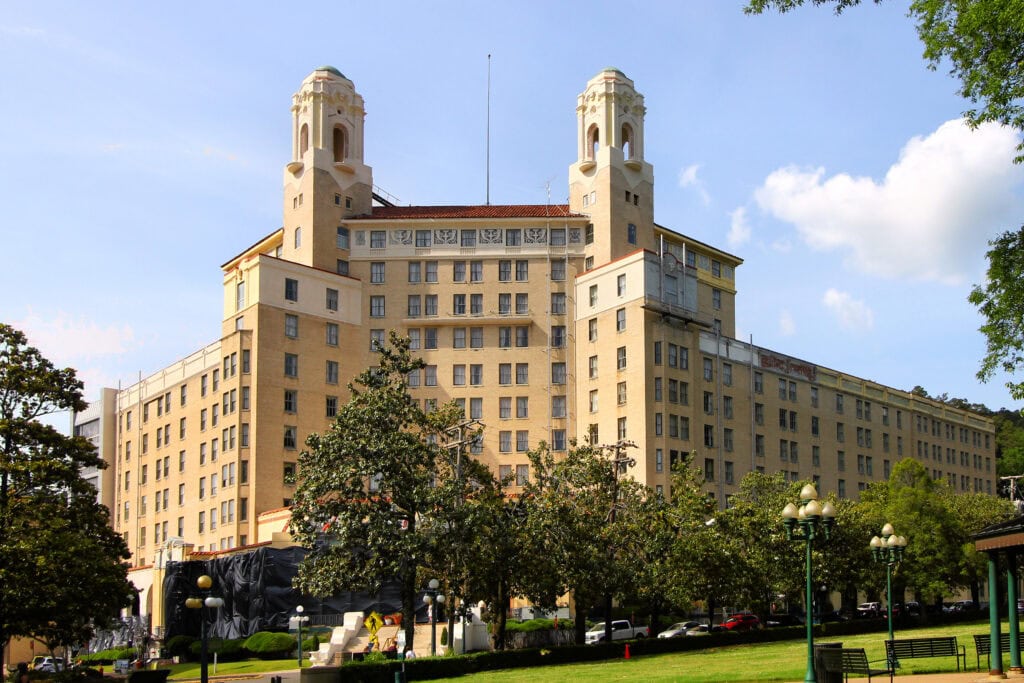
🍀

